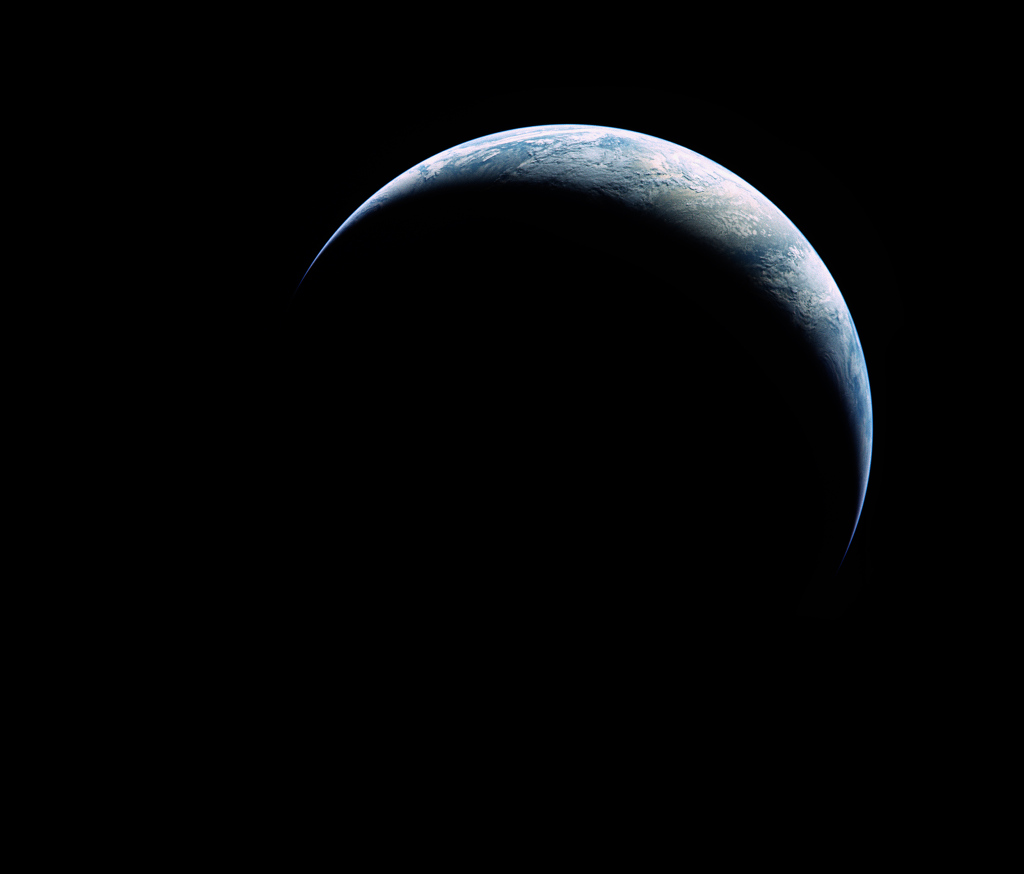2023年5月13日
Apollo 17: The Crescent Earth
Image Credit: Apollo 17, NASA; Restoration – Toby Ord
Explanation: Our fair planet sports a curved, sunlit crescent against the black backdrop of space in this stunning photograph. From the unfamiliar perspective, the Earth is small and, like a telescopic image of a distant planet, the entire horizon is completely within the field of view. Enjoyed by crews on board the International Space Station, only much closer views of the planet are possible from low Earth orbit. Orbiting the planet once every 90 minutes, a spectacle of clouds, oceans, and continents scrolls beneath them with the partial arc of the planet’s edge in the distance. But this digitally restored image presents a view so far only achieved by 24 humans, Apollo astronauts who traveled to the Moon and back again between 1968 and 1972. The original photograph, AS17-152-23420, was taken by the homeward bound crew of Apollo 17, on December 17, 1972. For now it is the last picture of Earth from this planetary perspective taken by human hands.
Tomorrow’s picture: free space
阿波罗17号影像: 蛾眉相的地球
影像提供: Apollo 17, NASA; 影像复原 – Toby Ord
说明: 在这幅令人赞叹、以黝黑太空为背景的的照片里,我们美丽的地球拥有弯弯的蛾眉相。在这个陌生的视角里,地球形似望远镜影像里的遥远行星,纵目可见的地平线全在视野之内。目前只有低地球轨道国际太空站上的机组人员,才能以更接近的视角观赏地球。在每90分钟绕行地球一圈的太空站上,视野下方有不停掠过的云海、海洋和陆块,以及远方弧状的地球临边。这幅经过数码修复的影像,呈现至今只有24位阿波罗计划的宇航员,在1968年至1972年往返月球途中,才有幸见到的景观。上面影像的原图(AS17-152-23420),是在1972年12月17日由阿波罗17号的组员摄于返程之时。截自目前为止,它是以这个行星际视角人类亲手拍摄的最后一张地球影像。
明日的图片: free space



